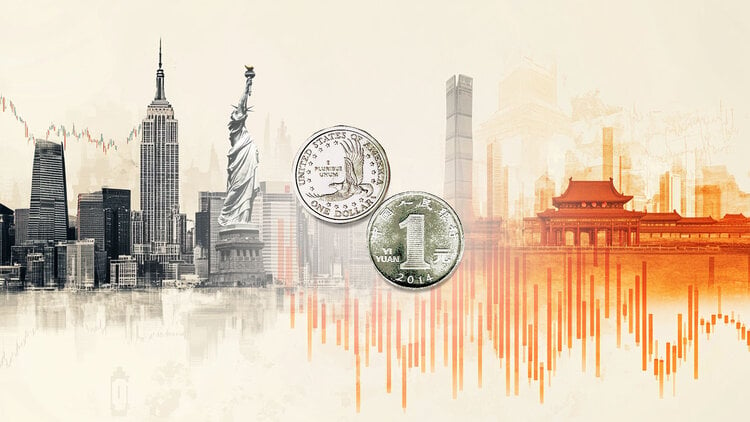- The US dollar index is 99.60 while the Taiwan dollar records the largest intradic jump in more than 30 years.
- The ISM PMI services rises to 51.6 in April, exceeding the estimates and reading of March 50.8.
- Treasury Secretary Besent says that trade agreements can be reached this week; The reduction of the deficit is sought.
- Market activity is still scarce with holidays in China and the United Kingdom.
The American dollar index (DXY), which measures the value of the US dollar compared to a foreign exchange basket, recorded slight profits on Monday while the Taiwan dollar shot more than 5%. The movement caused a broader recovery in Asian currencies in the midst of speculation about currency conversions by exporters. The markets remained thin with multiple holidays that affected liquidity.
Daily summary of market movements: the US dollar falls through the Taiwan currency movement and the hopes of commercial agreements
- The US Treasury Secretary, Scott Besent, said that the United States could end some commercial agreements as soon as this week, which generated optimism.
- Besent expressed confidence that 17 commercial partners, excluding China, have presented “very good” proposals that are under review.
- The secretary expects US economic growth to return to 3% for this time next year if current plans are implemented.
- He mentioned a goal of reducing the projections of the Congress Budget Office and reducing the federal deficit by approximately 1% annually.
- Besent pointed out a strong growth of private credit as a sign that banking regulations in the US are excessively strict and need adjustments.
- He also stressed that China has only made public offers in commercial negotiations, without new developments disseminated in private.
- The 5% increase of the Taiwanese dollar, the largest since the early 1990s, caused a general sale of US dollars in Asian currency markets.
- It is believed that exporters in Taiwan are turning their holdings into USD in advance of an appreciation of the local currency to ensure commercial profits.
- Negotiations between Taiwan and the US supposedly held their first official meeting on May 1, although no results were revealed.
- The market activity was unusually scarce, with China and the United Kingdom closed by vacation, exacerbating volatility in the currency market.
- The ISM PMI services rose to 51.6 in April, overcoming both the reading of March and the expectations of analysts, pointing out a stable activity in the US services sector.
- The employment index of the same report rose to 49.0, suggesting some improvement in the labor market within the service industry.
- The paid price index jumped at 65.1, generating concerns that underlying inflation could remain sticky despite the recent decrease in general figures.
- Despite the positive data of the ISM, the index of the US dollar fell, pressed by external currency dynamics and reduced expectations for increasing Fed rates.
- The operators are increasingly sure that the Federal Reserve will maintain the stable rates in the range of 4.25% –4.50% at the next meeting.
Technical analysis
The DXY index is currently traded at 99.93, with an increase of 0.08% in the day, within a daily range of 99.46 to 100.05. The impulse remains neutral with a relative force index (RSI) of 40.84, while the MACD shows a purchase signal. However, the simple mobile socks of 20, 100 and 200 days – in 100.13, 105.38 and 104.39, respectively – point to a continuation of the bearish trend. The additional pressure to the decline comes from both the EMAS of 10 days and 30 days, which are located at 99.77 and 101.09. The key support is located at 99.60, with resistance at 99.77, 100.08 and 100.13.
US dollar FAQS
The US dollar (USD) is the official currency of the United States of America, and the “de facto” currency of a significant number of other countries where it is in circulation along with local tickets. According to data from 2022, it is the most negotiated currency in the world, with more than 88% of all global currency change operations, which is equivalent to an average of 6.6 billion dollars in daily transactions. After World War II, the USD took over the pound sterling as a world reserve currency.
The most important individual factor that influences the value of the US dollar is monetary policy, which is determined by the Federal Reserve (FED). The Fed has two mandates: to achieve price stability (control inflation) and promote full employment. Its main tool to achieve these two objectives is to adjust interest rates. When prices rise too quickly and inflation exceeds the 2% objective set by the Fed, it rises the types, which favors the price of the dollar. When inflation falls below 2% or the unemployment rate is too high, the Fed can lower interest rates, which weighs on the dollar.
In extreme situations, the Federal Reserve can also print more dollars and promulgate quantitative flexibility (QE). The QE is the process by which the Fed substantially increases the flow of credit in a stuck financial system. It is an unconventional policy measure that is used when the credit has been exhausted because banks do not lend each other (for fear of the default of the counterparts). It is the last resort when it is unlikely that a simple decrease in interest rates will achieve the necessary result. It was the weapon chosen by the Fed to combat the contraction of the credit that occurred during the great financial crisis of 2008. It is that the Fed prints more dollars and uses them to buy bonds of the US government, mainly of financial institutions. Which usually leads to a weakening of the US dollar.
The quantitative hardening (QT) is the reverse process for which the Federal Reserve stops buying bonds from financial institutions and does not reinvote the capital of the wallet values that overcome in new purchases. It is usually positive for the US dollar.
Source: Fx Street
I am Joshua Winder, a senior-level journalist and editor at World Stock Market. I specialize in covering news related to the stock market and economic trends. With more than 8 years of experience in this field, I have become an expert in financial reporting.







